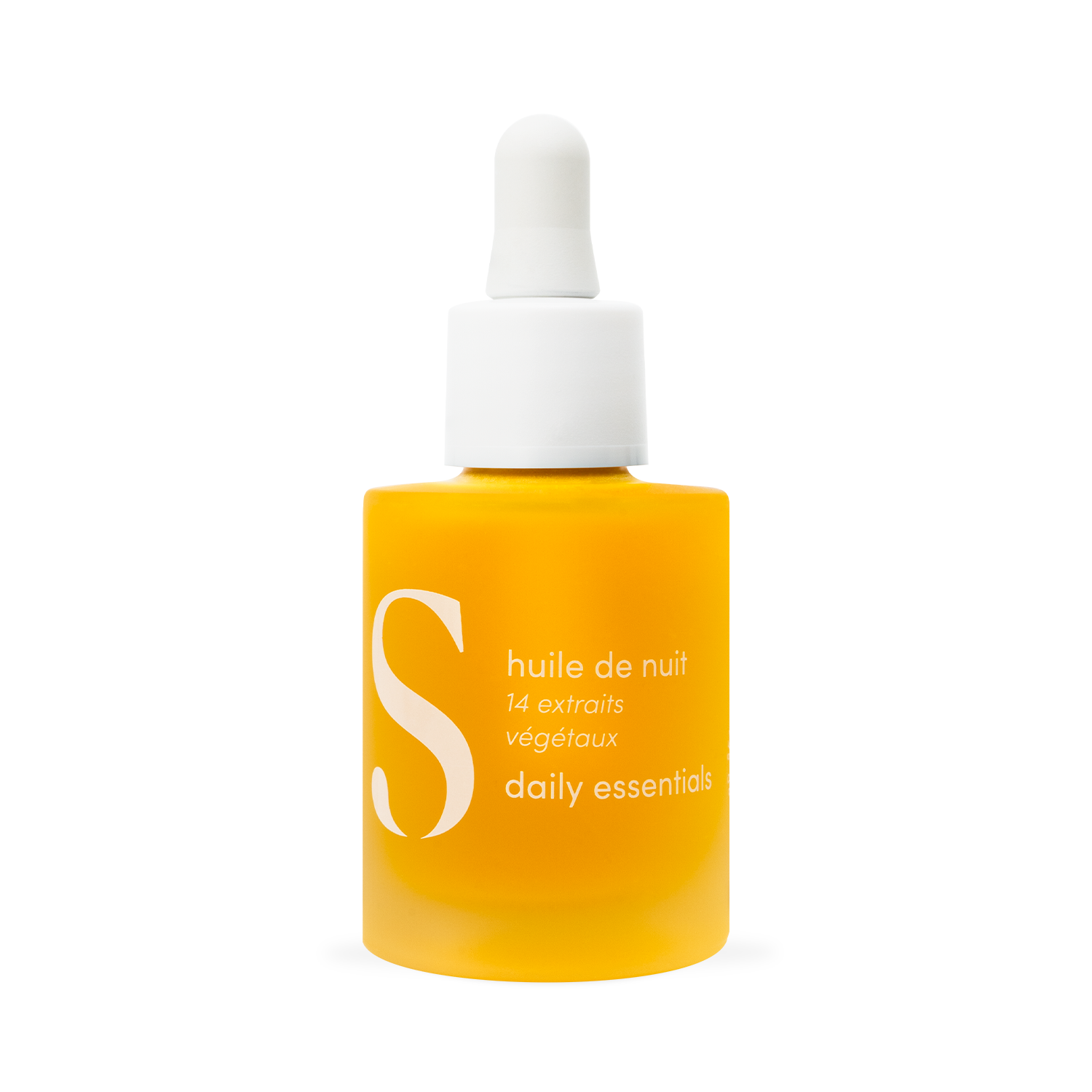BHA, AHA, PHA: what's the difference?
Let's decipher together the different types of (chemical) exfoliating acids that exist. Sensitive/reactive skin, don't stop reading, the use of these acids is not incompatible with more fragile skin. You simply need to choose the acids best suited to your skin.
If you're not familiar with acids, you may be wondering, what's the point of using them? You should know that the skin is made up of very numerous skin cells which are renewed over a cycle of approximately one month. During this month, these cells accumulate and gradually rise to the surface of the skin. Result: the complexion becomes dull, the skin texture thickens, the pores become clogged and flaking may appear (small patches of peeling skin). This is where chemical exfoliation comes in! Regular exfoliation helps accelerate the phenomenon of cell renewal while ridding the skin of dead cells. The result: a more regular skin texture, better collagen production, more effective absorption of facial treatments applied afterwards and a more even complexion.
Now, we must differentiate between the two types of exfoliation that exist: mechanical exfoliation and chemical exfoliation. Mechanical exfoliation is what is more commonly called a scrub. It is very often composed of “grains” which will exfoliate the skin by rubbing against the skin. The risk with this type of exfoliation is to damage your skin barrier and sensitize your skin in the long term. In the case of chemical exfoliation, these are active ingredients that penetrate deeper into the skin to remove dead cells without you needing to “scrub” your skin.
Let’s get to the heart of the matter: AHA, BHA, PHA, what’s the difference? All of these components are called hydroxy acids (from their scientific name) but they are divided into 3 categories.
AHA ( Alpha Hydroxy Acids)
In the case of AHAs, there are several types of acids, the best known are the following:
Glycolic acid :
Of all the AHAs, glycolic acid (which comes from sugar cane) is the most effective. As it is an active ingredient that has a small molecular size, it penetrates the skin deeply to better exfoliate it. It has a visible effect on skin texture and complexion radiance. It also helps regulate sebum production. It is one of the key acids in our peeling mask , the face mask which allows cells to be renewed without attacking the skin barrier.
Lactic acid :
Coming from the fermentation of milk or certain fruits, it is one of the gentlest acids which will perfectly suit the most sensitive skin. Its properties allow it to promote good maintenance of skin hydration. It is also found in our peeling mask to complement the action of glycolic acid and give a boost of radiance to dull complexions.
Mandelic acid :
Coming from almonds, this acid penetrates less deeply into the skin and acts more on the surface, which reduces all possible risks of irritation. It also helps reduce hyperpigmentation (mainly spots) and even out the complexion.
BHA (Beta Hydroxy Acids)
Salicylic acid is the best-known BHA. It is generally used in its synthetic form. It has a targeted action on comedones (blackheads) and helps dissolve them effectively. It is more suitable for combination to oily, acne-prone skin who would like a smoother skin texture. However, salicylic acid is the subject of scientific study; it would probably be an endocrine disruptor. This is why we have chosen not to include it in any of our products.
PHA (Poly Hydroxy Acids)
PHAs are a group of acids with a larger molecular size: they penetrate less deeply into the skin and are therefore perfect for skin with certain skin conditions (eczema, rosacea, dryness, etc.). Among them, we find:
Lactobionic acid :
Derived from lactose, it is hydrating, antioxidant and soothing. It is an active ingredient particularly suitable for dry, parched or dehydrated skin since it is non-irritating.
Last important point: don't forget to apply sunscreen if you use exfoliating acids. Indeed, they tend to be photosensitizing and therefore react to contact with UV. This can cause stains to appear.
Now we hope that you see things more clearly and that you will start using them in your routine (if this is not already the case). To accompany the use of exfoliating acids, we also advise you to practice double cleansing daily. To find out more, click here .





















